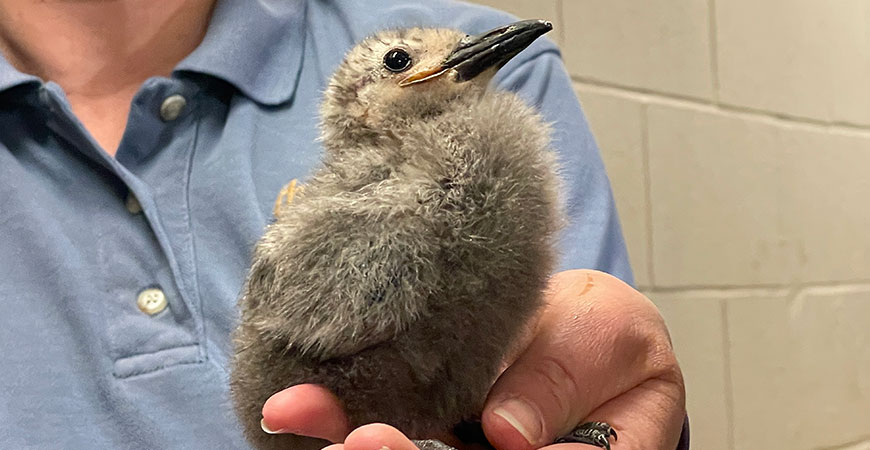ZOO CONTACT: Kyle Shepherd
502-238-5331 (Media Cell 502-744-5639)
kyle.shepherd@louisvilleky.gov
The Louisville Zoo is celebrating several hatchings this month. Two waldrapp ibis were hatched in late February. This species is considered one of the most endangered birds in the world. This is the first time the Zoo has celebrated waldrapp ibis hatchings in four years. The Zoo has been a longtime member of the Waldrapp Ibis Species Survival Plan (SSP) with 18 ibis chicks being hatched since 1993. The recent pairings were also a part of this SSP breeding plan. There are only 23 Association of Zoos and Aquariums (AZA) organizations that exhibit this species.
Additionally, four Inca tern chicks have hatched. This is the first time Louisville Zoo has bred this species. The four chicks are from two different pairs of birds.
The waldrapp Ibis are currently nesting in their exhibit in the giraffe house. Guests may get a glimpse of the chicks when the parents are feeding them. The genders of each bird are currently not known and will be determined once they’ve fledged (around 40 – 50 days).
The Inca terns are presently inside a nest box in the exhibit they share with the African penguins. Guests will be able to see them again after they are fully fledged (about 30 days) in late April. The genders of the Inca terns are also not known at this time and will be determined once fully fledged.
About Waldrapp Ibis and Inca Terns
Waldrapp ibis or northern bald ibis are considered endangered by the IUCN Red List of Threatened Species. They weigh about 8 – 10 lbs. and are 27 – 47 inches long. Once widespread across Northern Africa and Europe, they have now been reduced to two small populations in Morocco, Africa. The wild populations number only a few hundred individuals.
Inca terns’ status on the IUCN Red List of Threatened species is listed as near threatened with their population decreasing. They can be found Pacific Coasts and coastal islands of South America from the Gulf of Guayaquil, Ecuador south to Valdivia, and Chile near harbors, on rocky shores and sandy beaches. They are about 16 inches long.
***
About the Louisville Zoo
Since 2011, under Mayor Fischer’s administration, the Louisville Zoo celebrated its 50th anniversary, opened nine new exhibits and attractions, and won national awards for Glacier Run and School at the Zoo. Considered Kentucky’s most popular not-for-profit paid attraction, the Zoo welcomed nearly 9 million guests in the last decade. In 2021, the Zoo was voted “Best Place to Take Kids in Summer,” by LEO Weekly, “Best Kid-Friendly Attraction” by Kentucky Living Magazine and Boo at the Zoo made the Top 10 Halloween Festivals list by thetravel.com. Community Access Memberships, deep-discount days, the Future Healers Got Zoo Buddies partnership and the accessible playground are among prime efforts to make Louisville Zoo even safer, more engaging, and more inclusive. Among the Louisville Zoo’s most successful conservation programs, the black-footed ferret breeding effort produced 1,100 kits and repatriated more than 800 of these most highly endangered, American mammals to the wild.
The Louisville Zoo, a non-profit organization and state Zoo of Kentucky, is dedicated to bettering the bond between people and our planet by providing excellent care for animals, a great experience for visitors, and leadership in scientific research and conservation education. The Zoo is accredited by the Association of Zoos and Aquariums (AZA).
# # #

